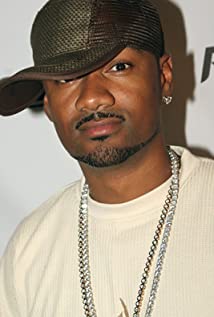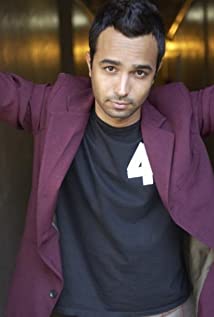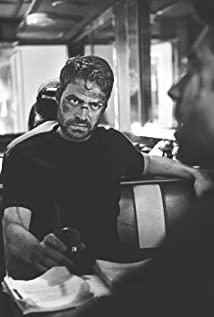Roscoe 'Fatty' Arbuckle was born on March 24, 1887 in Smith Center, Kansas, United States, is Actor, Director, Writer. Roscoe Arbuckle, one of nine children, was the baby of the family who weighed a reported 16 pounds at birth. Born in Smith Center, Kansas, on March 24, 1887, his family moved to California when he was a year old. At age eight he appeared on the stage. His first part was with the Webster-Brown Stock Company. From then until 1913, Roscoe was on the stage, performing as an acrobat, clown and singer. His first real professional engagement was in 1904, singing illustrated songs for Sid Grauman at the Unique Theater in San Jose, CA, at $17.50 a week. He later worked in the Morosco Burbank stock company and traveled through China and Japan with Ferris Hartman. His last appearance on the stage was with Hartman in Yokahama, Japan, in 1913, where he played the Mikado.Back in Hollywood, Arbuckle went to work at Mack Sennett's Keystone film studio at $40 a week. For the next 3-1/2 years he never starred or even featured, but appeared in hundreds of one-reel comedies. He would play mostly policemen, usually with the Keystone Kops, but he also played different parts. He would work with Mabel Normand, Ford Sterling, Charles Chaplin, among others, and would learn about the process of making movies from Henry Lehrman, who directed all but two of his pictures. Roscoe was a gentle and genteel man off screen and always believed that Sennett never thought that he was funny.Roscoe never used his weight to get a laugh. He would never be found stuck in a chair or doorway. He was remarkably agile for his size and used that agility to find humor in situations. By 1914 he had begun directing some of his one-reels. The next year he had moved up to two-reels, which meant that he would need to sustain the comedy to be successful--as it turned out, he was. Among his films were Fatty Again (1914), Mabel, Fatty and the Law (1915), Mabel and Fatty's Wash Day (1915), Mabel and Fatty Viewing the World's Fair at San Francisco (1915), Fatty's Reckless Fling (1915), and many more. For "Mabel and Fatty Viewing the World's Fair at San Francisco", Keystone took the actors to the real World's Fair to use as background; the studio's cost was negligible, while the San Francisco backgrounds made the picture look expensive.By 1917 Roscoe formed a partnership with Joseph M. Schenck, a powerful producer who was also the husband of Norma Talmadge. The company they formed was called Comique and the films that Roscoe made were released through Famous Players on a percentage basis, and soon Arbuckle was making over $1,000 a week. With his own company Roscoe had complete creative control over his productions. He also hired a young performer he met in New York by the name of Buster Keaton. Keaton's film career would start with Roscoe in The Butcher Boy (1917). Roscoe wrote his own stories first, tried them out and then devised funny twists to generate the laughs. His comedy star was second only to Charles Chaplin. With the success of Comique, Paramount asked Roscoe to move from two-reel shorts to full-length features in 1919. Roscoe's first feature was The Round-Up (1920) and it was successful. It was soon followed by other features, including Brewster's Millions (1921) and Gasoline Gus (1921).Ufortunately, tragedy struck on Labor Day on September 5, 1921 with the arrest and trial of Roscoe Arbuckle on manslaughter charges. Roscoe with friends Lowell Sherman and Fred Fishback drove to San Francisco where they checked into the St Francis Hotel threw a party and which was crashed by a "starlet" named Virginia Rappe, who fell seriously ill and died three days later from a ruptured bladder. Rappe had accused Arbuckle of raping her prior to passing away, but Rappe had a history of accusing men of rape. The newspapers, led by William Randolph Hearst, used this incident to generate Hollywood's first major scandal. Roscoe was tried not once but three times for the criminal charges; the trials began in November 1921 and lasted until April 1922; the first two ended with hung juries (the mistrial decision in the second trial was reached on February 3, 1922, the day after Arbuckle's friend and fellow Paramount director William Desmond Taylor was found murdered, and Arbuckle was visibly affected by the news). At his third and final trial in April of 1922, the jury not only returned a "not guilty" verdict but excoriated the prosecution for pursuing a flimsy case with no evidence of Arbuckle having committed any crime; it was at this final trial that the jury went further, writing a personal letter of sympathy and apology to Arbuckle for putting him through this ordeal. He kept it as a treasured memento for the rest of his life.However, Arbuckle's acquittal marked the end of his comedic acting career. Unable to return to the screen, he later found work as a comedy director for Al St. John, Buster Keaton and others under the pseudonym "William Goodrich" (he was inspired to use this pseudonym by Keaton, who suggested Arbuckle use the name "Will B. Good"). In 1932 producer Samuel Sax signed Roscoe to appear in his very first sound comic short films for Warner Brothers, starting with Hey, Pop! (1932). He completed six shorts and showed the magic and youthful spirit that he had a decade before. With the success of the shorts, Warner Brothers signed Roscoe to a feature film contract, but he died in his sleep on June 29, 1933 , at age 46, the night after he signed the contract.
Roscoe 'Fatty' Arbuckle is a member of Actor
Does Roscoe 'Fatty' Arbuckle Dead or Alive?
As per our current Database, Roscoe 'Fatty' Arbuckle has been died on June 29, 1933(1933-06-29) (aged 46)\nManhattan, New York City.
🎂 Roscoe 'Fatty' Arbuckle - Age, Bio, Faces and Birthday
When Roscoe 'Fatty' Arbuckle die, Roscoe 'Fatty' Arbuckle was 46 years old.
| Popular As |
Roscoe 'Fatty' Arbuckle |
| Occupation |
Actor |
| Age |
46 years old |
| Zodiac Sign |
Aries |
| Born |
March 24, 1887 ( Smith Center, Kansas, United States) |
| Birthday |
March 24 |
| Town/City |
Smith Center, Kansas, United States |
| Nationality |
United States |
🌙 Zodiac
Roscoe 'Fatty' Arbuckle’s zodiac sign is Aries. According to astrologers, the presence of Aries always marks the beginning of something energetic and turbulent. They are continuously looking for dynamic, speed and competition, always being the first in everything - from work to social gatherings. Thanks to its ruling planet Mars and the fact it belongs to the element of Fire (just like Leo and Sagittarius), Aries is one of the most active zodiac signs. It is in their nature to take action, sometimes before they think about it well.
🌙 Chinese Zodiac Signs
Roscoe 'Fatty' Arbuckle was born in the Year of the Pig. Those born under the Chinese Zodiac sign of the Pig are extremely nice, good-mannered and tasteful. They’re perfectionists who enjoy finer things but are not perceived as snobs. They enjoy helping others and are good companions until someone close crosses them, then look out! They’re intelligent, always seeking more knowledge, and exclusive. Compatible with Rabbit or Goat.
Some Roscoe 'Fatty' Arbuckle images
Famous Quotes:
Acquittal is not enough for Roscoe Arbuckle. We feel that a great injustice has been done him. We feel also that it was only our plain duty to give him this exoneration, under the evidence, for there was not the slightest proof adduced to connect him in any way with the commission of a crime. He was manly throughout the case and told a straightforward story on the witness stand, which we all believed. The happening at the hotel was an unfortunate affair for which Arbuckle, so the evidence shows, was in no way responsible. We wish him success and hope that the American people will take the judgment of fourteen men and woman who have sat listening for thirty-one days to evidence, that Roscoe Arbuckle is entirely innocent and free from all blame.
Biography/Timeline
1887
Roscoe Conkling Arbuckle was born on March 24, 1887 in Smith Center, Kansas, one of nine children of Mary E. "Mollie" Gordon (d. February 19, 1898) and william Goodrich Arbuckle. He weighed in excess of 13 lb (5.9 kg) at birth and, as both parents had slim builds, his father believed the child was not his. Consequently, he named the baby after a Politician (and notorious philanderer) whom he despised, Republican senator Roscoe Conkling of New York. The birth was traumatic for Mollie and resulted in chronic health problems that contributed to her death 12 years later.
1899
When Arbuckle was nearly two his family moved to Santa Ana, California. Roscoe had a "wonderful" singing voice and was extremely agile. At the age of eight, with his mother's encouragement, he first performed on stage with Frank Bacon's company during their stopover in Santa Ana. Arbuckle enjoyed performing and continued on until his mother's death in 1899 when he was 12. His father, who had always treated him harshly, now refused to support him and Arbuckle got work doing odd jobs in a hotel. Arbuckle was in the habit of singing while he worked and was overheard by a customer who was a professional singer. The customer invited him to perform in an amateur talent show. The show consisted of the audience judging acts by clapping or jeering with bad acts pulled off the stage by a shepherd's crook. Arbuckle sang, danced, and did some clowning around, but did not impress the audience. He saw the crook emerge from the wings and to avoid it somersaulted into the orchestra pit in obvious panic. The audience went wild, and he not only won the competition but began a career in vaudeville.
1904
In 1904, Sid Grauman invited Arbuckle to sing in his new Unique Theater in San Francisco, beginning a long friendship between the two. He then joined the Pantages Theatre Group touring the West Coast of the United States and in 1906 played the Orpheum Theater in Portland, Oregon in a vaudeville troupe organized by Leon Errol. Arbuckle became the main act and the group took their show on tour.
1908
On August 6, 1908, Arbuckle married Minta Durfee (1889–1975), the daughter of Charles Warren Durfee and Flora Adkins. Durfee starred in many early comedy films, often with Arbuckle. They made a strange couple, as Minta was short and petite while Arbuckle tipped the scales at 300 lbs. Arbuckle then joined the Morosco Burbank Stock vaudeville company and went on a tour of China and Japan returning in early 1909.
1909
Arbuckle began his film career with the Selig Polyscope Company in July 1909 when he appeared in Ben's Kid. Arbuckle appeared sporadically in Selig one-reelers until 1913, moved briefly to Universal Pictures and became a star in producer-director Mack Sennett's Keystone Cops comedies (However, according to the Motion Picture Studio Directory for 1919 and 1921, Arbuckle began his screen career with Keystone in 1913 as an extra for $3 a day (equivalent to approximately $74 in 2017 dollars), working his way up through the acting ranks to become a lead player and Director.) Although his large size was undoubtedly part of his comedic appeal Arbuckle was self-conscious about his weight and refused to use it to get "cheap" laughs. For Example, he would not allow himself to be stuck in a doorway or chair.
1913
Despite his physical size, Arbuckle was remarkably agile and acrobatic. Director Mack Sennett, when recounting his first meeting with Arbuckle, noted that he "skipped up the stairs as lightly as Fred Astaire"; and, "without warning went into a feather light step, clapped his hands and did a backward somersault as graceful as a girl tumbler". His comedies are noted as rollicking and fast-paced, have many chase scenes, and feature sight gags. Arbuckle was fond of the "pie in the face", a comedy cliché that has come to symbolize silent-film-era comedy itself. The earliest known pie thrown in film was in the June 1913 Keystone one-reeler A Noise from the Deep, starring Arbuckle and frequent screen partner Mabel Normand.
1914
Arbuckle was regarded by those who knew him closely as a good-natured man who was shy with women; he has been described as "the most chaste man in pictures". However, studio executives, fearing negative publicity by association, ordered Arbuckle's industry friends and fellow actors (whose careers they controlled) not to publicly speak up for him. Charlie Chaplin, who was in Britain at the time, told reporters that he could not (and would not) believe Roscoe Arbuckle had anything to do with Virginia Rappe's death; having known Arbuckle since they both worked at Keystone in 1914, Chaplin "knew Roscoe to be a genial, easy-going type who would not harm a fly." Buster Keaton reportedly did make one public statement in support of Arbuckle's innocence which earned him a mild reprimand from the studio where he worked. Film actor william S. Hart, who had never met or worked with Arbuckle, made a number of damaging public statements in which he presumed that Arbuckle was guilty. Arbuckle later wrote a premise for a film parodying Hart as a thief, bully, and wife beater, which Keaton purchased from him. The following year in 1922, Keaton co-wrote, directed and starred in The Frozen North, the resulting film, and as a result, Hart refused to speak to Keaton for many years.
1916
By 1916, Arbuckle was experiencing serious health problems. An infection that developed on his leg became a carbuncle so severe that doctors considered amputation. Although Arbuckle was able to keep his leg, he became addicted to the pain killer morphine.
1918
Following his recovery, Arbuckle started his own film company, Comique, in partnership with Joseph Schenck. Although Comique produced some of the best short pictures of the silent era, in 1918 Arbuckle transferred his controlling interest in the company to Buster Keaton and accepted Paramount's $3 million offer to make up to 18 feature films over three years.
1920
Many of Arbuckle's films, including the feature Life of the Party (1920), survive only as worn prints with foreign-language inter-titles. Little or no effort was made to preserve original negatives and prints during Hollywood's first two decades. By the early 21st century, some of Arbuckle's short subjects (particularly those co-starring Chaplin or Keaton) had been restored, released on DVD, and even screened theatrically. Arbuckle's early influence on American slapstick comedy is widely recognised.
1921
During the whole trial, the prosecution presented medical descriptions of Rappe's bladder as evidence that she had an illness. In his testimony, Arbuckle denied he had any knowledge of Rappe's illness. During cross-examination, Assistant District Attorney Leo Friedman aggressively grilled Arbuckle over the fact that he refused to call a Doctor when he found Rappe sick, and argued that he refused to do so because he knew of Rappe's illness and saw a perfect opportunity to rape and kill her. Arbuckle calmly maintained that he never physically hurt or sexually assaulted Rappe in any way during the September 5 party, and he also claimed that he never made any inappropriate sexual advances against any woman in his life. After over two weeks of testimony with 60 prosecution and defense witnesses, including 18 doctors who testified about Rappe's illness, the defense rested. On December 4, 1921, the jury returned five days later deadlocked after nearly 44 hours of deliberation with a 10–2 not guilty verdict, and a mistrial was declared.
1922
Arbuckle tried returning to filmmaking, but industry resistance to distributing his pictures continued to linger after his acquittal. He retreated into alcoholism. In the words of his first wife, "Roscoe only seemed to find solace and comfort in a bottle". Buster Keaton attempted to help Arbuckle by giving him work on his films. Arbuckle wrote the story for a Keaton short called Daydreams (1922). Arbuckle allegedly co-directed scenes in Keaton's Sherlock, Jr. (1924), but it is unclear how much of this footage remained in the film's final cut. In 1925, Carter Dehaven made the short Character Studies. Arbuckle appeared alongside Buster Keaton, Harold Lloyd, Rudolph Valentino, Douglas Fairbanks, and Jackie Coogan. The same year, in Photoplay's August issue, James R. Quirk wrote "I would like to see Roscoe Arbuckle make a comeback to the screen." He also said "The American nation prides itself upon its spirit of fair play. We like the whole world to look upon America as the place where every man gets a square deal. Are you sure Roscoe Arbuckle is getting one today? I'm not."
1924
Between 1924 and 1932, Arbuckle directed a number of comedy shorts under the pseudonym for Educational Pictures, which featured lesser-known comics of the day. Louise Brooks, who played the ingenue in Windy Riley Goes Hollywood (1931), told Kevin Brownlow of her experiences in working with Arbuckle:
1925
After the trials, Hollywood shunned Arbuckle, and he could no longer find work. A secondary effect, for archive history, was the determined destruction of copies of films starring Arbuckle. In November 1923, Minta Durfee filed for divorce, charging grounds of desertion. The divorce was granted the following January. They had been separated since 1921, though Durfee always claimed he was the nicest man in the world and they were still friends. After a brief reconciliation, Durfee again filed for divorce, this time while in Paris, in December 1924. Arbuckle married Doris Deane on May 16, 1925.
1927
Among the more visible directorial projects under the Goodrich pseudonym was the Eddie Cantor feature Special Delivery (1927), which was released by Paramount and co-starred William Powell and Jobyna Ralston. His highest-profile project was arguably The Red Mill, also released in 1927, a Marion Davies vehicle.
1932
In 1932, Arbuckle signed a contract with Warner Bros. to star under his own name in a series of six two-reel comedies, to be filmed at the Vitagraph studios in Brooklyn. These six short films constitute the only recordings of his voice. Silent-film Comedian Al St. John (Arbuckle's nephew) and actors Lionel Stander and Shemp Howard appeared with Arbuckle. The films were very successful in America, although when Warner Bros. attempted to release the first one (Hey, Pop!) in the United Kingdom, the British Board of Film Censors cited the 10-year-old scandal and refused to grant an exhibition certificate.
1933
On June 28, 1933, Arbuckle had finished filming the last of the two-reelers (four of which had already been released). The next day he signed a contract with Warners to star in a feature-length film. That night he went out with friends to celebrate his first wedding anniversary and the new Warner contract when he reportedly said: "This is the best day of my life." He suffered a heart attack later that night and died in his sleep. He was 46. His widow Addie requested that his body be cremated as that was Arbuckle's wish.
1960
Eventually, Arbuckle worked as a Director under the alias William Goodrich. According to author David Yallop in The Day the Laughter Stopped (a biography of Arbuckle with special attention to the scandal and its aftermath), Arbuckle's father's full name was william Goodrich Arbuckle. Another tale credited Keaton, an inveterate punster, with suggesting that Arbuckle become a Director under the alias "Will B. Good". The pun being too obvious, Arbuckle adopted the more formal pseudonym "William Goodrich". Keaton himself told this story during a recorded interview with Kevin Brownlow in the 1960s.
1975
The James Ivory film The Wild Party (1975) has been repeatedly but incorrectly cited as a film dramatization of the Arbuckle–Rappe scandal. In fact it is loosely based on the 1926 poem by Joseph Moncure March. In this film, James Coco portrays a heavy-set silent-film Comedian named Jolly Grimm whose career is on the skids, but who is desperately planning a comeback. Raquel Welch portrays his mistress, who ultimately goads him into shooting her. This film was loosely based on the misconceptions surrounding the Arbuckle scandal, yet it bears almost no resemblance to the documented facts of the case.
1977
In Ken Russell's 1977 biopic Valentino, Rudolph Nureyev as a pre-movie star Rudolph Valentino dances in a nightclub before a grossly overweight, obnoxious, and hedonistic Celebrity called "Mr. Fatty" (played by william Hootkins), a caricature of Arbuckle rooted in the public view of him created in popular press coverage of the Rappe rape trial. In the scene, Valentino picks up starlet (Jean Acker played by Carol Kane) off a table in which she is sitting in front of Fatty and dances with her, enraging the spoiled star, who becomes apoplectic. The caricature of Arbuckle as a boor continued to be promulgated in the seventies by film Writers such as Kenneth Anger in his seminal work Hollywood Babylon.
1980
Fatty Arbuckle's was an American-themed restaurant chain in the UK prominent during the 1980s and named after Arbuckle.
1997
Before his death in 1997, Comedian Chris Farley expressed interest in starring as Arbuckle in a biography film. According to the 2008 biography The Chris Farley Show: A Biography in Three Acts, Farley and Screenwriter David Mamet agreed to work together on what would have been Farley's first dramatic role. In 2007, Director Kevin Connor planned a film, The Life of the Party, based on Arbuckle's life. It was to star Chris Kattan and Preston Lacy. However the project was shelved. Like Farley, comedians John Belushi and John Candy also considered playing Arbuckle, but each of them died before a biopic was made. Farley's film was signed with Vince Vaughn as his co-star.
2004
Arbuckle is the subject of a 2004 novel titled I, Fatty by author Jerry Stahl. The Day the Laughter Stopped by David Yallop and Frame-Up! The Untold Story of Roscoe "Fatty" Arbuckle by Andy Edmonds are other books on Arbuckle's life. The 1963 novel, Scandal in Eden by Garet Rogers, is a fictionalized version of the Arbuckle scandal.
2005
In 2005, jazz trumpet player Dave Douglas released the album "Keystone", dedicated to the work of Roscoe Arbuckle. It contains a DVD which features the movie Fatty and Mabel Adrift (1916/ Keystone – Triangle), starring Roscoe Arbuckle, Mable Normand, Al St. John, and Luke the Dog.
2006
In April and May 2006, the Museum of Modern Art in New York City mounted a 56-film, month-long retrospective of all of Arbuckle's known surviving work, running the entire series twice.
2012
Stoneface, a 2012 play by Vanessa Claire Stewart about Buster Keaton, depicts Keaton's and Arbuckle's friendship and professional relationship.
2013
Arbuckle is played by actor Brett Ashy in the motion picture Return to Babylon (2013).
2014
Arbuckle disliked his screen nickname. "Fatty" had also been Arbuckle's nickname since school; "It was inevitable", he said. He weighed 185lb (13st 3lb, 84kg) when he was 12. Fans also called Roscoe "The Prince of Whales" and "The Balloonatic". However, the name Fatty identifies the character that Arbuckle portrayed on-screen (usually a naive hayseed)—not Arbuckle himself. When Arbuckle portrayed a female, the character was named "Miss Fatty", as in the film Miss Fatty's Seaside Lovers. Arbuckle discouraged anyone from addressing him as "Fatty" off-screen, and when they did so his usual response was, "I've got a name, you know."
2017
Some experts later concluded that Rappe's bladder might also have ruptured as a result of an abortion she might have had a short time before the September 5 party. Rappe's organs had been destroyed and it was now impossible to test for pregnancy. Because alcohol was consumed at the party, Arbuckle was forced to plead guilty to one count of violating the Volstead Act, and had to pay a $500 fine. At the time of his acquittal, Arbuckle owed over $700,000 (equivalent to approximately $10,200,000 in 2017 dollars) in legal fees to his attorneys for the three Criminal trials, and he was forced to sell his house and all of his cars to pay some of the debt.
Roscoe 'Fatty' Arbuckle trend



















